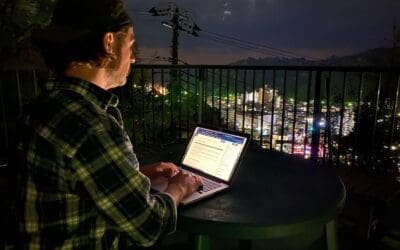A New Strategy: How AI Prototypes Can Reinvent Oiso Beach
Along the coast of Kanagawa, just an hour from Tokyo, the town of Oiso has long been a quiet destination for surfers and retirees. Now, it is becoming something else entirely: a staging ground for a different kind of development strategy. This week, Akiyaz released a promotional concept video showcasing a revitalized Oiso waterfront. More than a marketing piece, the video serves as a proof of concept. It is an experiment in how modern digital tools, specifically an AI-generated prototype, can shift a conversation and introduce a new strategy for development.
In a society where urban planning tends to be reactive, slow, and deeply skeptical of the unfamiliar, the ability to show what does not yet exist is a powerful strategic intervention. The Oiso Beach concept video, built from real footage and layered with algorithmic enhancements, explores speculative uses for beachfront infrastructure. Pop-up cafes, modular public baths, and cultural performance zones emerge in sweeping transitions. These visual prompts invite stakeholders to respond not with caution, but with imagination. This approach relies on provocation more than prediction, aiming to short-circuit Japan’s traditionally slow planning process.
The Problem: Japan's Culture of "Permission-Based" Planning
To understand why this new strategy is so powerful, one must first understand the system it seeks to bypass. Development and planning in Japan are often characterized by a top-down, consensus-driven process that can take years, if not decades. This culture of “permission-based” planning is designed to minimize risk, but in doing so, it often stifles creativity and speed. Any new proposal must typically endure endless committee reviews, navigate opaque zoning maps, and survive the scrutiny of legacy stakeholders.
This system inherently privileges precedent over possibility. It is built to analyze and approve ideas that are similar to what has been done before. A truly novel concept—one that does not fit into existing categories—faces immense friction. The institutional fear of the untested means that innovative ideas often die in thick PDF reports long before they have a chance to be seen or understood by the public. This is the bureaucratic inertia that a modern development strategy, centered on a tangible prototype, is designed to confront.
The Intervention: AI Prototypes as a Strategic Tool
In this context, a well-made concept video becomes more than design; it becomes leverage. It creates an opportunity to reframe the entire conversation—visually, viscerally, and quickly. The use of an AI-generated prototype is the key to this new strategy. Unlike a detailed architectural rendering, which feels final and expensive, an AI prototype can be produced rapidly and with minimal budget. It communicates possibility without the pressure of a finished plan.
The Oiso Beach concept video is not meant to be a final blueprint. That is its strategic advantage. Its AI-generated prototypes are intentionally rough around the edges, hinting at future forms rather than prescribing them. This unfinished quality is an invitation to participate. It asks viewers, “What would you add here? Who could this space serve that it doesn’t today?” Instead of asking stakeholders to approve a static plan, this strategy invites them to co-create a vision. It replaces fear of the unknown with curiosity about the potential that the prototype reveals.
Technology That Moves Without Permission
Too often in Japan, digital tools are used merely to reinforce the status quo. Municipal software systems are decades behind, and public data platforms are fragmented. Most “innovation” is purely cosmetic—a new interface laid over an old, inefficient process. The Oiso Beach concept video offers a sharp break from that pattern. It is fast, speculative, and, crucially, it was built without needing government approval to begin.
This is part of a larger effort at Akiyaz to use modern tools for creating actual momentum. The current generation of AI editing software, digital mapping platforms, and lightweight modeling tools allows a small, agile team to produce a powerful prototype that can compete with the output of a large, well-funded agency. This changes the power dynamic of who gets to propose ideas. Local creatives, small developers, and even international partners can now join the development conversation, not with a theory, but with a tangible prototype that anyone can understand. This transforms the prototype from a simple image into a potent social and political tool.
The Principle: Seeing Is Starting
In a culture that rarely moves until consensus is achieved, sometimes the most radical act is to show what comes next before anyone asks for it. A conventional approach would be to write a proposal and wait for it to be reviewed. The development strategy deployed for Oiso inverts this. It does not wait for permission. It proposes, it sketches, it tempts. By breaking away from traditional presentation formats, it bypasses institutional hesitation and makes the future feel more tangible and immediate.
For communities across Japan, especially those with high vacancy rates and underutilized public spaces, this approach offers a powerful model. Do not just plan; show. Do not just write; render. A single, compelling prototype can open more doors and change more minds than a dozen policy memos. At Akiyaz, we believe real development starts with a clear vision. And vision, now, is something you can edit, publish, and iterate overnight. This is the essence of a modern strategy built to confront stagnation, using tools that are faster, cheaper, and far more vivid than anything on the municipal agenda.



